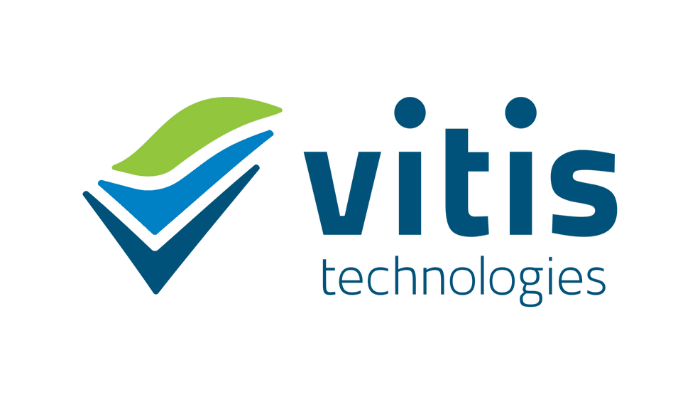Cybersecurity Program
Cybersecurity at Kable Academy involves a three-phase course integrating business solutions and essential tech.
Phase 1: IT Support, teaches students to dismantle, repair, and rebuild computers, enabling them to troubleshoot software and hardware issues.
Phase 2: Network Support, focuses on making computers, servers, and networks communicate, including creating and installing networking wires.
Phase 3: Security Support, students combine their knowledge to learn security fundamentals, such as analyzing security technologies, implementing secure systems, understanding MS Window OS security settings, and basics of forensics, disaster recovery, and continuity of operations.
Full-Time – 12 Weeks | Part-Time – 24 weeks | Online or In-person Courses | Beginner Friendly
Industry Relevant Skills
Phase 1
IT Support
 Hardware Installation and Configuration
Hardware Installation and Configuration Operating System Installation and Configuration
Operating System Installation and Configuration Data Backup types
Data Backup types Virtual Machine Creation and Management
Virtual Machine Creation and Management Programming Language Fundamentals
Programming Language Fundamentals SQL NoSQL Database Fundamentals
SQL NoSQL Database Fundamentals Application Classification and Configuration
Application Classification and Configuration Network Fundamentals
Network Fundamentals Cybersecurity Fundamentals
Cybersecurity Fundamentals
Phase 2
Network Support
 OSI and TCP Network Models
OSI and TCP Network Models Cabling Topologies
Cabling Topologies Network Installation and Monitoring
Network Installation and Monitoring Routing
Routing IPv4 & IPv6 addressing
IPv4 & IPv6 addressing Wireless Network Configuration
Wireless Network Configuration Switch and Router Management
Switch and Router Management Cloud Fundamentals
Cloud Fundamentals SSL and Encryption
SSL and Encryption

Phase 3
Cybersecurity
 Public Key Interface
Public Key Interface Access Management
Access Management Active Directory
Active Directory Mobile Device Management
Mobile Device Management Cybersecurity Best Practices
Cybersecurity Best Practices Incident Response Procedures
Incident Response Procedures Business Continuity
Business Continuity Security Networks
Security Networks Risk Management
Risk Management Application Security
Application Security
Got a Question
Let us know
![]() Schedule a one-on-one with one of our instructors.
Schedule a one-on-one with one of our instructors.
![]() We will work around your schedule!
We will work around your schedule!
FAQ
Cybersecurity refers to the practice of protecting computer systems, networks, devices, and sensitive information from unauthorized access, theft, damage, or disruption. It involves a combination of technologies, processes, and practices designed to secure digital information and prevent cyber threats, such as hacking, malware, phishing, ransomware, and other types of cyber-attacks.
- Cybersecurity is a necessity in maintaining trust in the digital landscape and safeguarding sensitive information. Cyber threats come in many forms, including malware, phishing attacks, and ransomware. If a cyber-attack occurs, a business may be unable to access its data for a period of time. The leak or theft of intellectual property can also severely damage a business’s competitive advantage.
The great part about Cybersecurity is that it can be complex and constantly evolving. We teach our students how to not only be successful and confident, we’ll walk you through the fundamentals that will be the foundation you need to enter the exciting and ever expanding world of Cybersecurity.
Cybersecurity does not necessarily require coding, but having knowledge of programming languages can be very helpful in understanding and implementing cybersecurity measures. However, knowledge of security protocols, risk management, and threat intelligence, are what is important in this field. It is important to note that cybersecurity is a multidisciplinary field that requires knowledge in a range of technical and non-technical areas, including communication, critical thinking, and problem-solving skills.
Our Cybersecurity classes are designed for people with a range of backgrounds and experience levels, including those who are new to the field. We start with basic concepts and gradually build on them to cover more advanced topics.
After the bootcamp you will be given the tools and information to obtain an ITF, Network+ or CyberSecurity+ Cert. At completion of our program, you will be given a Certification of Completion in the learning of IT Support, Network Support and Cybersecurity.
A cybersecurity bootcamp is a great option for someone who wants to learn cybersecurity quickly and intensively, and who is looking for a structured and guided learning experience.
In our 12-week course you will learn the fundamentals of Cybersecurity, but it requires 12 weeks of focus and determination for full-time and 24 weeks for part-time. Cybersecurity is a constantly evolving field and ongoing learning, and adaption are necessary to stay current with the latest threats and best practices.
Cybersecurity Testimonials













Where are Kable grads Now?













CAREER SERVICES
Prepare for a New Career
Kable Academy is dedicated to providing top-tier career services and job support for individuals pursuing opportunities in the tech sector. Our friendly and experienced Career Services team is committed to assisting individuals at all stages of their career journey, offering personalized guidance and coaching to help you achieve success in the tech industry.

Scholarship
ACT FAST SCHOLARSHIP!
Complete all steps of the application process within 15 days. This includes: Student Survey, Assessments, Acceptance Call, Enrollment Agreement, and First Tuition Payment.
$1,500
Financing
Pay in Full
Pay prior to your first day of class.
Tuition is $9,500
Up to 100% of tuition
Pay with Affirm
Pay in installments. Applications must be approved prior to the first day of class.
Tuition is $9,500
Up to 100% of tuition
523 Plan
Invest in your future by applying your 529 education savings toward our career-focused tech programs.
Tuition is $9,500
Up to 100% of tuition
Climb Credit Loan
Students can make manageable monthly payments over a few months or years.
Tuition is $9,500
Up to 100% of tuition
PayPal
Pay prior to your first day of class.
Tuition is $9,500
Up to 100% of tuition
Venmo
Pay prior to your first day of class.
Tuition is $9,500
Up to 100% of tuition
Afterpay
Buy now and pay it in 4 interest-free installments over 6 weeks.
$9,500 or 4 payments of $2,375
Up to 100% of tuition
Klarna
Choose exactly how much you want to pay and when. There’s a flexible payment option that works with any budget.
Tuition is $9,500
Up to 100% of tuition
County-Based Funding
For Ohio Counties https://jfs.ohio.gov/about/local-agencies-directory